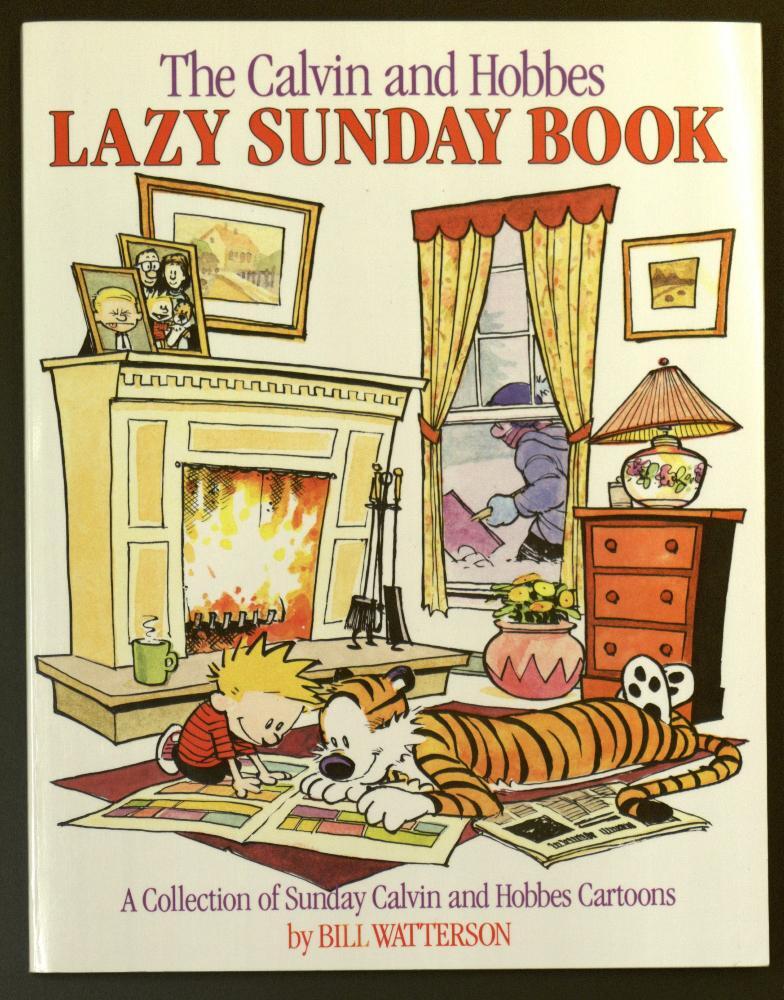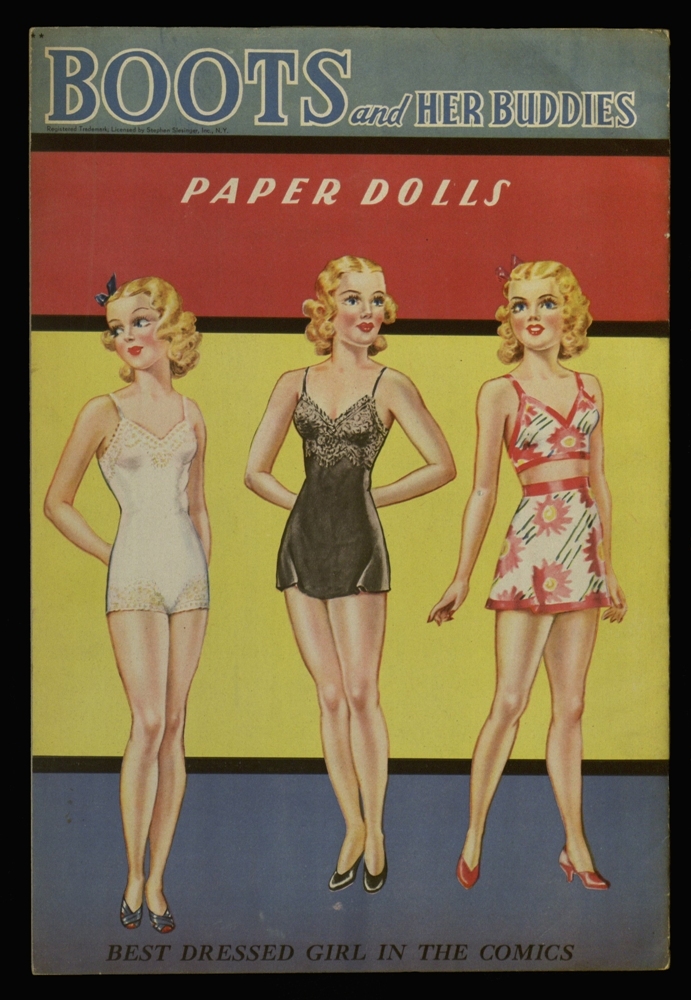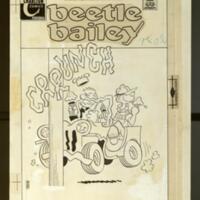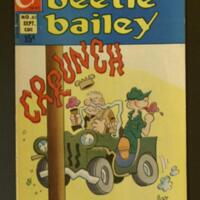Alley Oop
Comics After Alley Oop
The comic strip has been an important part of American culture for well over a century. In the past 75 years, the comics genre has seen many changes in format and style, and today there exists a rich variety of artistic styles. The following selections from the Comic Art Collection held in the Special Collections Division of Ellis Library are but a few of the many important works that either are contemporary to Alley Oop or have been created since Alley Oop was first printed. The Collection contains original art work, well-known comic issues, up-and-coming artists, underground comix, and graphic novels.
Boots and her Buddies
Edgar Everett ("Abe") Martin joined the Newspaper Enterprise Association in 1921 as a syndicated cartoonist. His creation Boots and Her Buddies was introduced as a daily comic strip on February 18, 1924 and became popular immediately with NEA subscribers and their readers.
The Sunday comic strip originally was the top strip for the "Our Boarding House" page running from 1926 to 1931. Martin then began a full Sunday page of his own titled Girls. On September 9, 1934, the page became Boots though some newspapers kept the title Girls long after the name change. Popular paper cutouts were first featured on the Sunday pages first under the Girls title and later under Boots. The paper dolls continued until the early 1960s.
During the 1950s the job of providing Boots story lines belonged to University of Missouri student and English instructor Thomas B. Harris. Working many weeks in advance of the preparation of the art work, Harris sent rough story ideas to artist Martin who approved them and sent them to NEA. When NEA approval was received, Harris wrote the daily dialogue for the entire story sequence. Harris married Mary Martin, the daughter of Edgar E. Martin.
Edgar Martin died in August 31, 1960 and the daily strip ceased on October 15, 1960. The Sunday page continued, published unsigned, until June 6, 1965 when the signature of Les Carroll, Harris' former assistant appears on the strip. Carroll issued the strip until October 6, 1968. Thomas Harris died in 1992.
The Edgar E. Martin Collection located in the Special Collections Department of Ellis Library contains information about Edgar E. Martin and his strip Boots and Her Buddies. Included in the collection are original comic strips from 1942-1959, selected clippings of the strip, and articles from the same period. Continuities written by son-in-law Thomas B. Harris are also in the collection.
Beetle Bailey
Mort Walker published his first cartoon at the age of 13 in the Kansas City Journal. After finishing high school and working for Hallmark, he decided to transfer from junior college to the University of Missouri to attend the Journalism School. Walker completed a semester before being drafted into the WWII army. He was bounced back and forth through army training divisions until he finally ended up in Italy as an intelligence officer.
Walker was discharged from the army after four years of service and went back to MU to complete his degree. He graduated from Mizzou in 1948 and moved to New York City to try his luck in cartoons. In 1950, King Features picked up Beetle Bailey. At the time, Beetle was a college student at Rockview University, modeled after Walker's alma mater, Mizzou. After a year of moderate success, Walker admitted Beetle into the army, reflecting the country's involvement in the Korean War, which greatly increased the strip's circulation and popularity.
Walker worked on several other comics such as Hi & Lois, Sam's Strip, and Boner's Ark. When Walker passed away in 2018, Beetle Bailey was among the oldest strips still being produced by its original creator.
The Mort Walker Collection in the Special Collections division of Ellis library is focused on Mort Walker's visit to the University of Missouri in 1992 as a Scholar-in-Residence. A highlight of the visit was the unveiling of a bronze statue of Beetle Bailey. Prior to that occasion, Walker had donated original cartoons, animation cels, books, lithographs and posters to the MU Libraries.

Bill Watterson.
The Calvin and Hobbes lazy Sunday book.
Kansas City: Andrews and McMeel, 1989.
©1989, Universal Press Syndicate.
Calvin and Hobbes
The antics and adventures of young Calvin and his stuffed tiger Hobbes were drawn, written, and inked solely by creator Bill Watterson. The world of Calvin and Hobbes was filled with everyday life and imagination, including a 6-year-old boy's play world of dinosaurs, superheroes, and a time machine. The strip ran from November 18, 1985- December 31, 1995 and at its height, was carried in over 2,500 newspapers. The strip received many accolades throughout its run, including several Harvey, Eisner, and Reuben Awards. The strip was so popular that newspapers paid full price for previously run strips during a sabbatical taken by Watterson. Watterson was also able to force newspaper editors to change the way they structured the Sunday comics to accommodate his artistic needs. Although Calvin and Hobbes is one of the best loved comics of all time, Watterson continually rejects licensing and merchandising opportunities to stay true to his characters.




